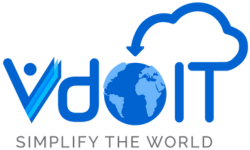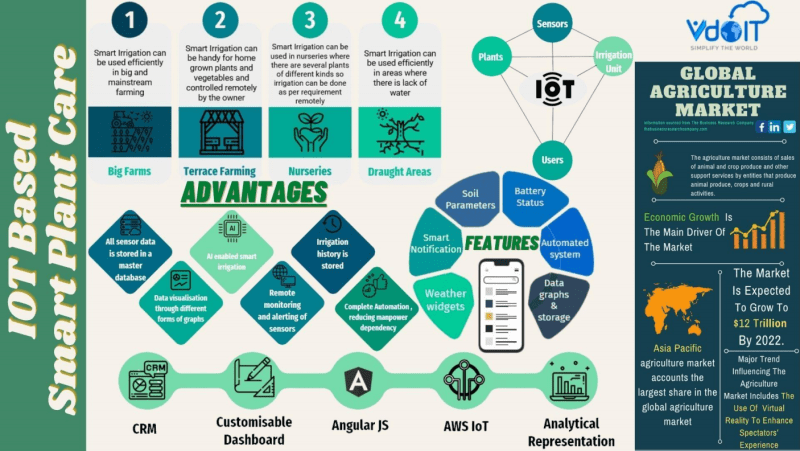Regardless of farm size, farmers need to grow healthier, more productive plants. They face increasing pressures from climate change, soil erosion, biodiversity loss, and consumers’ changing tastes in food and concerns about how it is produced.
Smart farming practices are accelerating innovation in agriculture as we all move towards a more sustainable future. From healthy soil to better vegetables on the shelf, from farmers’ incomes to fair corporate practices, therefore such technology can bring positive change to people’s lives.
An Intelligent Plant Care tool that will provide end-to-end solutions for horticultural and agricultural organizations to benefit from technical capabilities of IoT, AI/ML.
The solution will integrate suitable sensors, external Data sources, existing systems and very easily accessible from smart phone, tablet, and desktop.
Preferable Tech Stack
- AWS lambda Functions: It is a serverless compute service that lets you run scalable code without provisioning or managing servers. It runs your code only when needed and pays only when it runs.
- AWS S3 Bucket: AWS s3 will be used for all kinds of data storage (code to be deployed to some DNS or related things to be saved).
- AWS API Endpoint and Gateway: This module will be used for communication from and to the backend, and also to store in the database.
- AWS DynamoDB: AWS DynamoDB is a fully managed, serverless, key-value NoSQL database designed to run high-performance applications at any scale. DynamoDB offers built-in security, continuous backups, automated multi-Region replication, in-memory caching, and data export tools
- AWS Eventbridge: Amazon EventBridge is a serverless event bus that makes it easier to build event-driven applications at scale using events generated from your applications, integrated Software-as-a-Service (SaaS) applications, and AWS services.
- AWS IoT Core: AWS IoT Core will let us connect IoT devices to the AWS cloud without the need to provision or manage servers.
- AWS IoT Analytics: AWS IoT Analytics will allow us to run and operationalize sophisticated analytics on massive volumes of IoT data.
- AWS Sagemaker: Amazon SageMaker will help us to prepare, build, train, and deploy machine learning (ML) models that will be used to forecast data.
- AngularJS/ReactJS: For the front-end of the application.
It will be a hierarchical system with respective access given to each system layer. Because all users access their services from the same technology platform it is much easier to access automatic and frequent updates. Multi-tenancy provides companies of all sizes the ability to reside in the same infrastructure and data center. This capability provides the customers with the ability to meet their requirements and communication styles to manage all IT and communication expenses.
Few IOT devices that can be used:
Soil Sensor
Water level sensor
GPS sensor
Air sensor
Weather sensor
Irrigation actuator
Sensors (to be installed in farm/garden)
The sensors send us data periodically through the IOT network. The sensors can connect through LoraWAN.
Irrigation:
The irrigation can be intelligently triggered through AI using the past data of the field. It can help the plant to grow. The irrigation device can also be manually triggered or scheduled to run at certain times.
Type of data:
-Soil humidity: In this we can show the required minimum and maximum humidity value of the plant, and if the value is not in the given range an indication can also be present.
-Soil temperature: In this we can show the required minimum and maximum temperature (in Celsius and Fahrenheit as per the requirement) value if and if the value is not in the given range an indication can also be present.
-Battery percentage: Here we show the battery percentage of the sensor, if and if the value is not in the given range an indication can also be present.
-Water level: The water level of the water tank is shown here.
-Electrical conductivity: The electrical conductivity of soil helps maintain salt level.
-Device Location: The location of the device helps in getting weather data and forecasting.
Benefit: Smart Farming Solutions
Customized dashboards to monitor your plant
Better care for high risk plants
Can monitor and irrigate remotely
Graphical representation of data is possible for analytical purposes.
Highly cost effective solution

